The Tower of Hercules - Galicia
Friday, October 25, 2024
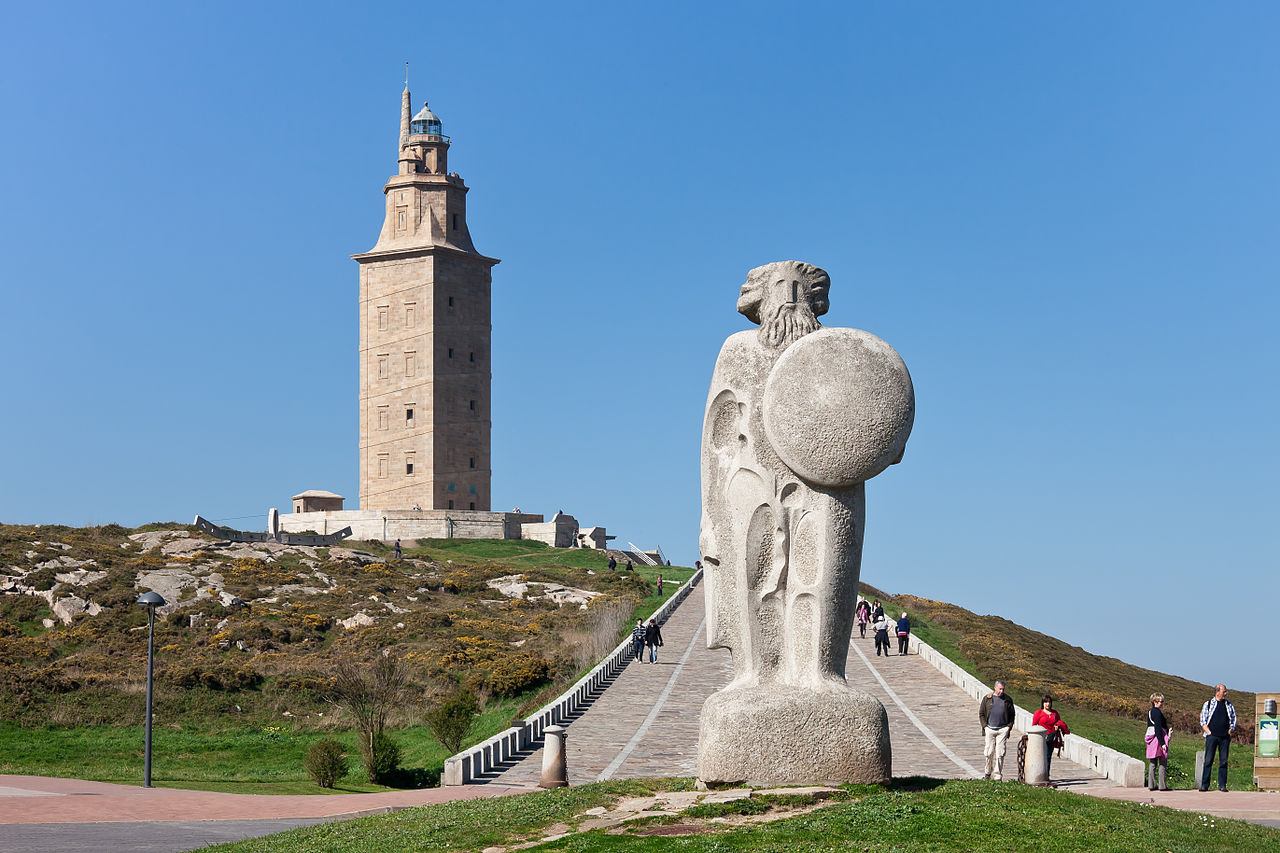
The Tower of Hercules is an ancient Roman lighthouse on a peninsula about 2.4 kilometres (1.5 mi) from the centre of A Coruña, Galicia, in northwestern Spain. It is easily the most well preserved lighthouse remaining from the classical Roman age. According to myth, it also marks the resting place of one of Hercules' greatest conquests. As part of one of the mythic Twelve Labours of Hercules, the super strong son of Zeus is said to have killed the giant Gerylon with an arrow dipped in Hydra's blood. Then in a gesture that is more Celtic than Roman, the legend says that Hercules buried the giant with his weapons and ordered a city built atop the burial site. While the area where the tower is built was rather barren when it was originally built, the surrounding city of Corunna has sprung up around it across the millennia. While there are not actually titanic bones beneath the tower, the legend is so pervasive that an image of the tower atop a skull and bones is the centrepiece of the city's coat of arms.
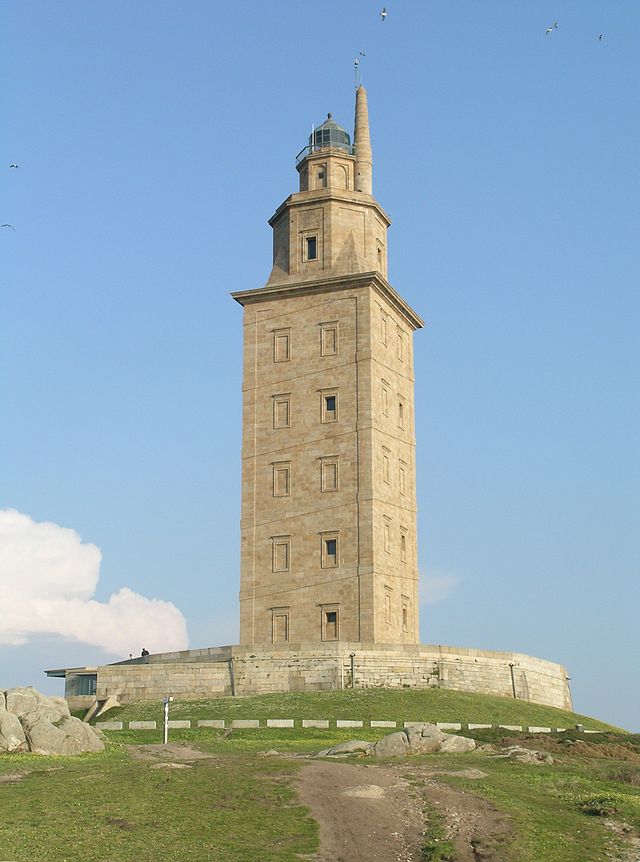
Until the 20th century, the tower itself was known as the "Farum Brigantium" or “Brigantia Lighthouse”. The Latin word ‘farum’ is derived from the Greek pharos for the Lighthouse of Alexandria. The structure is 55 metres (180 ft.) tall and overlooks the North Atlantic coast of Spain. Almost 1900 years old and rehabilitated in 1791, it is the only Roman lighthouse still in use today.
The Tower of Hercules is a National Monument of Spain, and since June 27, 2009, has been a UNESCO World Heritage Site. It is the second tallest lighthouse in Spain, after the Faro de Chipiona.
The tower is known to have existed by the 2nd century, is thought to be modelled after the Lighthouse of Alexandria. At its base is preserved the cornerstone with the inscription MARTI AUG.SACR C.SEVIVS LUPUS ARCHTECTUS AEMINIENSIS LVSITANVS.EX.VO, permitting the original lighthouse tower to be ascribed to the architect Gaius Sevius Lupus, from Aeminium (present-day Coimbra, Portugal) in the former province of Lusitania, as an offering dedicated to Mars. The tower has been in constant use since then. The earliest known reference to the lighthouse at Brigantium is by Paulus Orosius in Historiae adversum Paganos written around 415-417.
 09.52.31.png)
 09.52.04.png)
 09.52.21.png)
 09.53.04.png)
In 1788, the original 34 metres (112 ft), 3-storey tower was given a neoclassical restoration, including a new fourth storey.(an additional 21 metres) The restoration was undertaken by naval engineer Eustaquio Giannini during the reign of Charles III of Spain, and was finished in 1791. Within, the much-repaired Roman and medieval masonry can still be appreciated. 09.53.14.png)
The Romans who conquered this region of Spain believed it to be, in a figurative sense, the end of the earth, as described in "Finisterra". This region is notorious for shipwrecks, earning the name Costa da Morte, "The Coast of Death".
The positioning of the lighthouse is not very clear since it strongly favours an approach from the northwest. It does not provide a true guide to safe harbour to vessels approaching either up the West coast of the Iberian peninsula, nor along the Rias of the north coast, as one might expect. This would imply that the lighthouse was built to satisfy the needs of regular traffic coming in from the Atlantic, perhaps taking a westerly route from the Côte d’Opale area to avoid the Bay of Biscay or direct from Ireland or even South West England. Whatever its purpose was, the only thing that really matters now is that we have this wonderful example of Roman architecture to enjoy on what is one of Spain’s most stunning coastlines.
 2
Like
Published at 11:34 PM Comments (0)
2
Like
Published at 11:34 PM Comments (0)
Astorga - A Must-visit!
Saturday, October 12, 2024
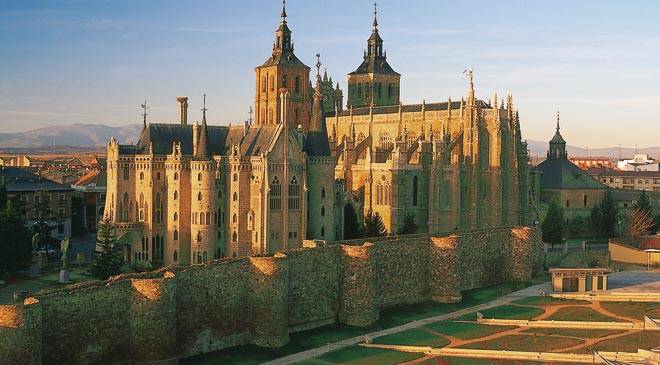
Astorga is the place where two of Spain's most important cultural routes converge: the Way of Saint James and the Silver Route. With over 2,000 years of history, this city in Castile-León is home to a surprising monumental site, where Renaissance cathedrals and Roman baths jostle with the modernism of Gaudí.
To discover Astorga you have to head for the province of León, in northwestern Spain. It is located just 45 kilometres from the city of the same name, León, in a region known as La Maragatería. After being conquered by the Romans, the town became an important strategic centre, mainly on account of the area's wealth in deposits of gold. The heritage of that period and the remains of the mines themselves are some of the attractions you will find in Astorga, but not the only ones.
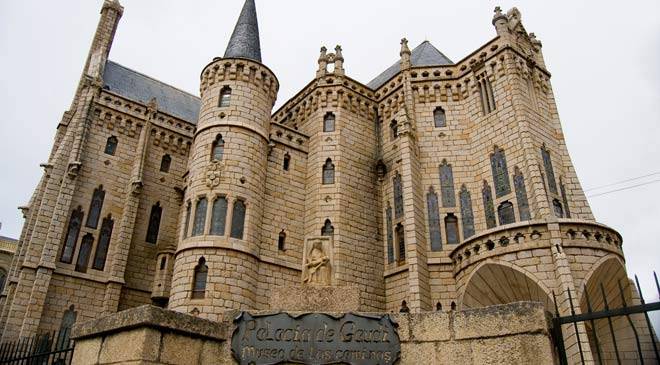
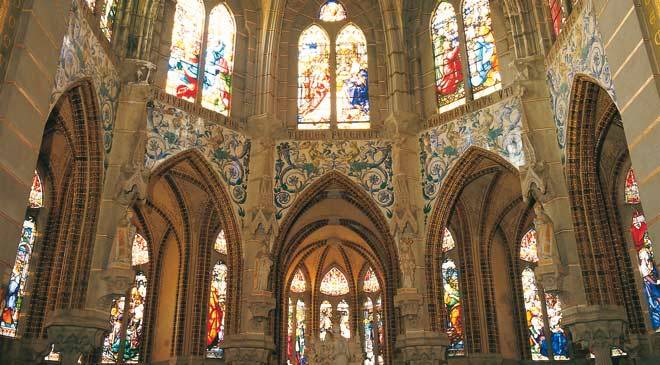
The first thing you will notice when you get to the town is the view of two of its most important monuments, Santa María Cathedral and the Episcopal Palace. The two buildings are set side by side and are surrounded by a Roman defensive wall which is in an excellent state of conservation. Take a close look, because the Cathedral is a beautiful synthesis of styles, with elements ranging from Florid Gothic to Baroque and Renaissance. This is because construction work began in the 15th century and was not completed until the 18th. Another unusual aspect is the difference in colour of the two towers that flank the main entrance - one of them was affected by an earthquake in 1775 and took longer to be finished. Inside, be sure to admire the stunning main altarpiece and choir stalls.
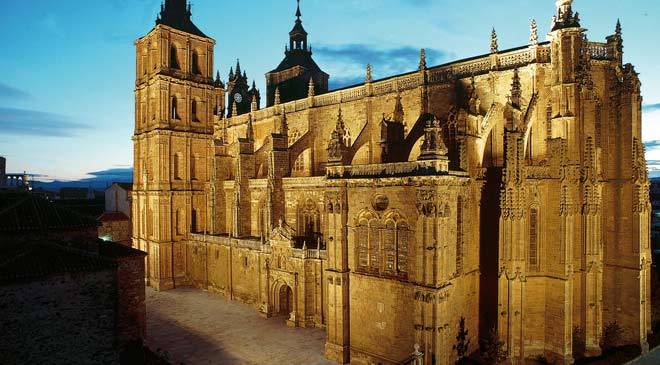
Beside the Cathedral is the Episcopal Palace, designed by the famous modernist architect Antonio Gaudí. It is a neo-gothic building that looks like something out of a fairy tale. In the garden outside you will be welcomed by three angels in zinc, and inside you can visit the Los Caminos Museum, which has an interesting collection of items related with the Way of Saint James. Astorga is home to other interesting buildings, such as Casa Granell House and San Andrés Church.
Next, head for Plaza Mayor Square where you will find the baroque Town Hall and a traditional street market held every Tuesday morning. A visit to the town's Roman remains is also not to be missed. You will find remains of the forum, thermal baths, "domus" (houses), the imperial temple, the camp of the legion and the drainage network. In the ancient Ergastula (prison) you will now find the Roman Museum with statues, amphorae, jewellery and reliefs. To make sure you see everything, it is best first to visit the town's Tourist Office.
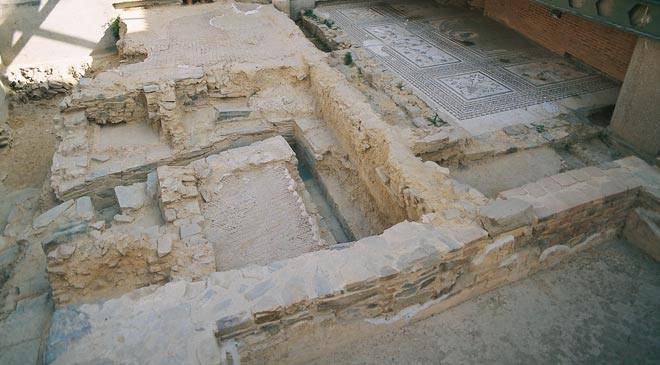
If you have more time, head out to one of the surrounding villages and discover the charm and character of the traditional architecture of the La Maragatería region. Castrillo de los Polvazares, for example, just 5 kilometres from Astorga, is home to a good representation, and we would also recommend you try the typical dish of the region: maragato casserole. You can also do the “Gold Route”, that will take you to different villages around the region in search of ancient Roman mines. Be sure to make a stop to discover Astorga. You will be pleasantly surprised.
 5
Like
Published at 12:26 PM Comments (0)
5
Like
Published at 12:26 PM Comments (0)
A Mysterious Mine
Friday, October 4, 2024
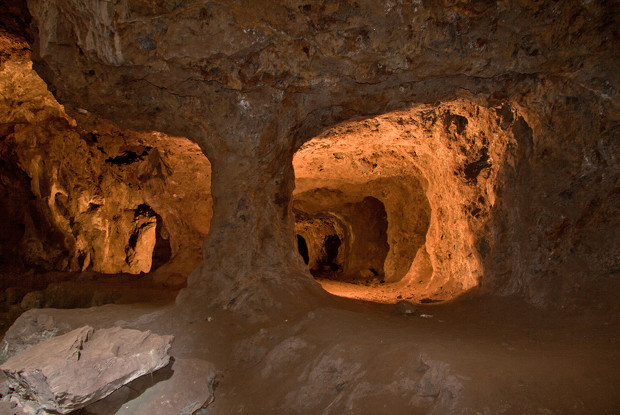
There are few more mysterious places than an abandoned mine. You are not often presented with the opportunity to visit one, but in La Jayona, in the mountain range that separates Extremadura from Andalusia, you have the only chance to do it. Walking through the passages of this excavation you can see how the hands of man and nature have joined together to create an unequalled landscape, steeped in history and mystery.
Right in the middle of the La Jayona mountain range, about five kilometres from Fuente del Arco, an experience steeped in nature, history and adventure is waiting for you. The La Jayona Mine closed down in 1921. Until then, hundreds of long-suffering miners had laboured to extract iron ore. At first, they worked with the help of horses, later with that of an overhead cable connecting the mine with the railway station.
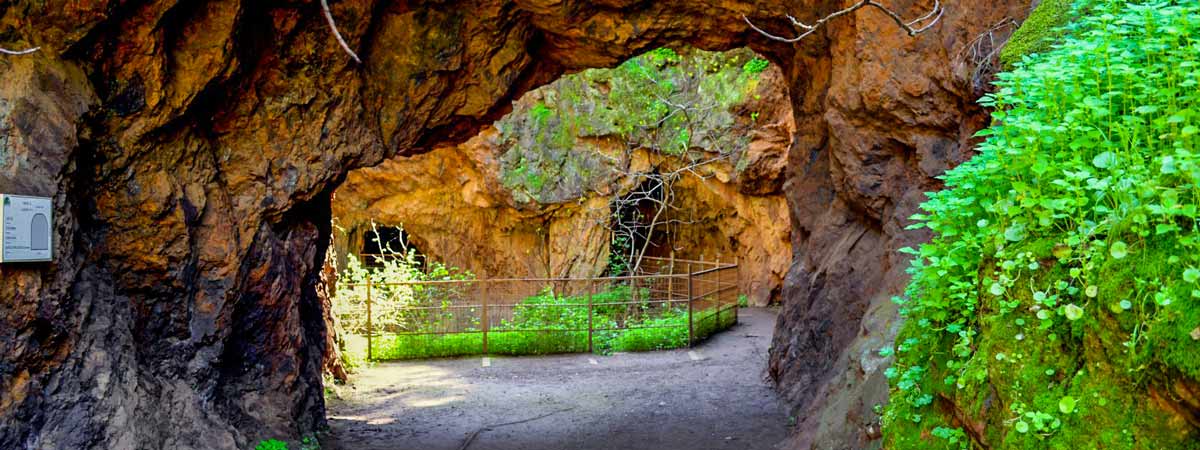
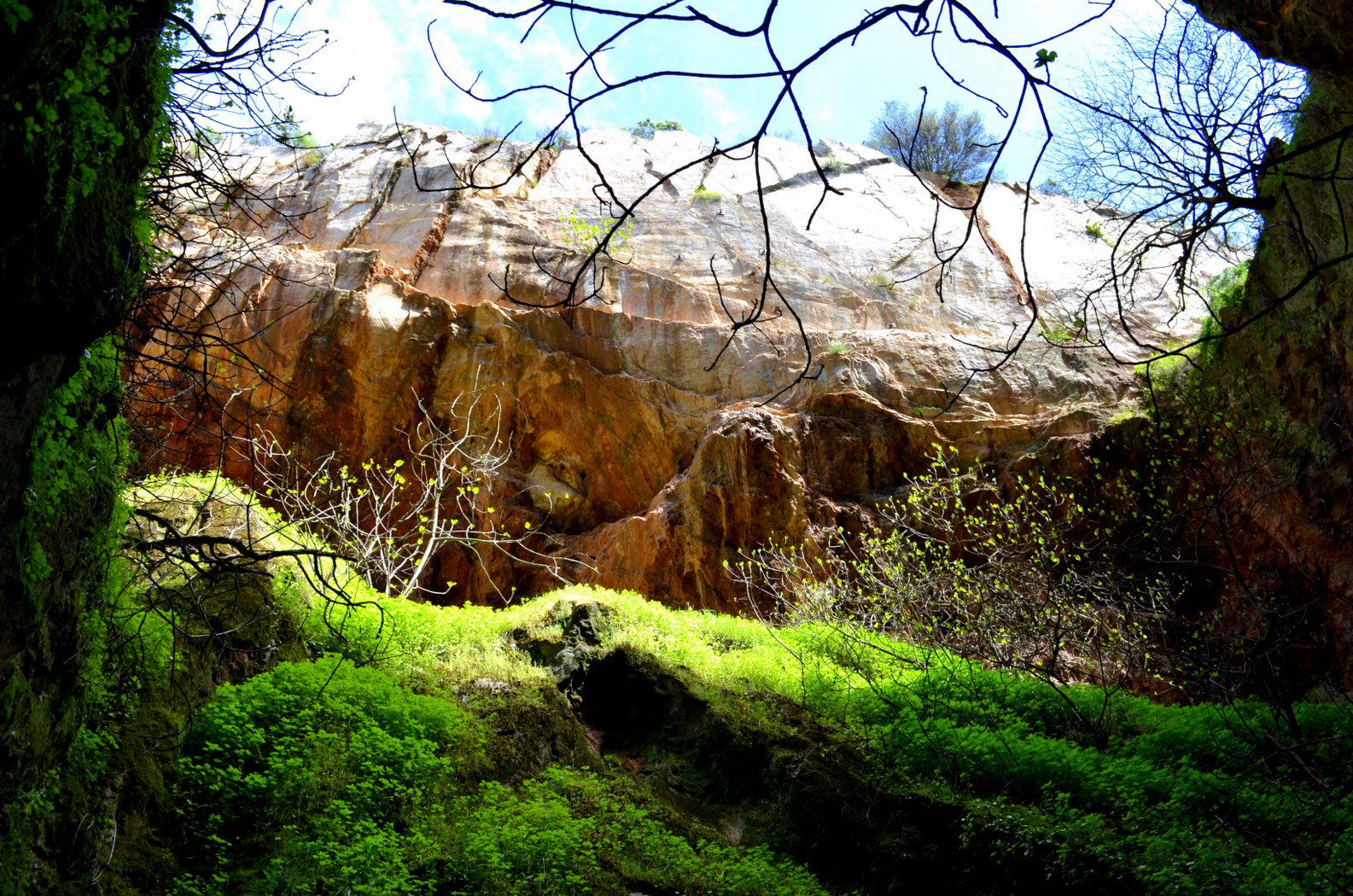

More than seventy years passed before the mine was rescued from oblivion and declared a Natural Monument in 1997. During the dark years of excavation, nature had taken over the abandoned galleries to create a rich ecosystem that today coexists with the mining remains of the cavity. Fern, climbing plants, moss, insects, bats and even birds live in the rocky recesses of the mine.
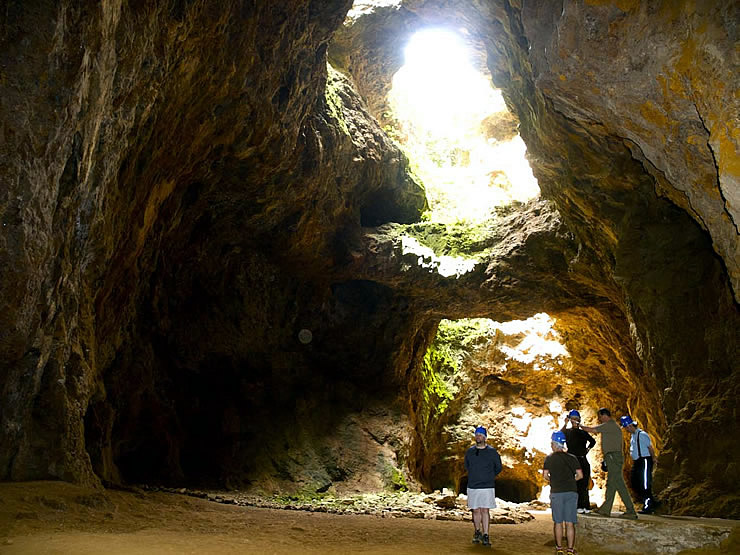 Inside, the galleries follow the natural veins of the mineral, which enables one to observe geological phenomena such as fold hinges, karstic processes, striation and slickensides. Each one of these formations, blended with nature's exuberance and the sunlight that peeps through small cracks and cavities will make your tour of the mine an exciting, magical experience. Inside, the galleries follow the natural veins of the mineral, which enables one to observe geological phenomena such as fold hinges, karstic processes, striation and slickensides. Each one of these formations, blended with nature's exuberance and the sunlight that peeps through small cracks and cavities will make your tour of the mine an exciting, magical experience.
Before visiting La Jayona - admission is free - you need to telephone the Fuente del Arco Town Council (667 756 600). The council organises the groups and a guide shows you the three galleries that are open to the public, although there used to be 11 in operation. Outside, the remains of the rubble and munitions dump still bring back memories of the area's industrial past.
The mine is Fuente del Arco's main tourist attraction, a small village that still lives around its Plaza Mayor, where you can see the parish church of Our Lady of the Assumption.
The most important building in the municipality is the chapel of Nuestra Señora del Ara, located a few kilometres away in the mountains. It is a Mudejar and Baroque-inspired church that is unremarkable from the outside but leaves visitors literally speechless when they enter. The walls and vaults are covered in frescos of great beauty and colours which certainly remind one of its “big sister” in the Vatican.
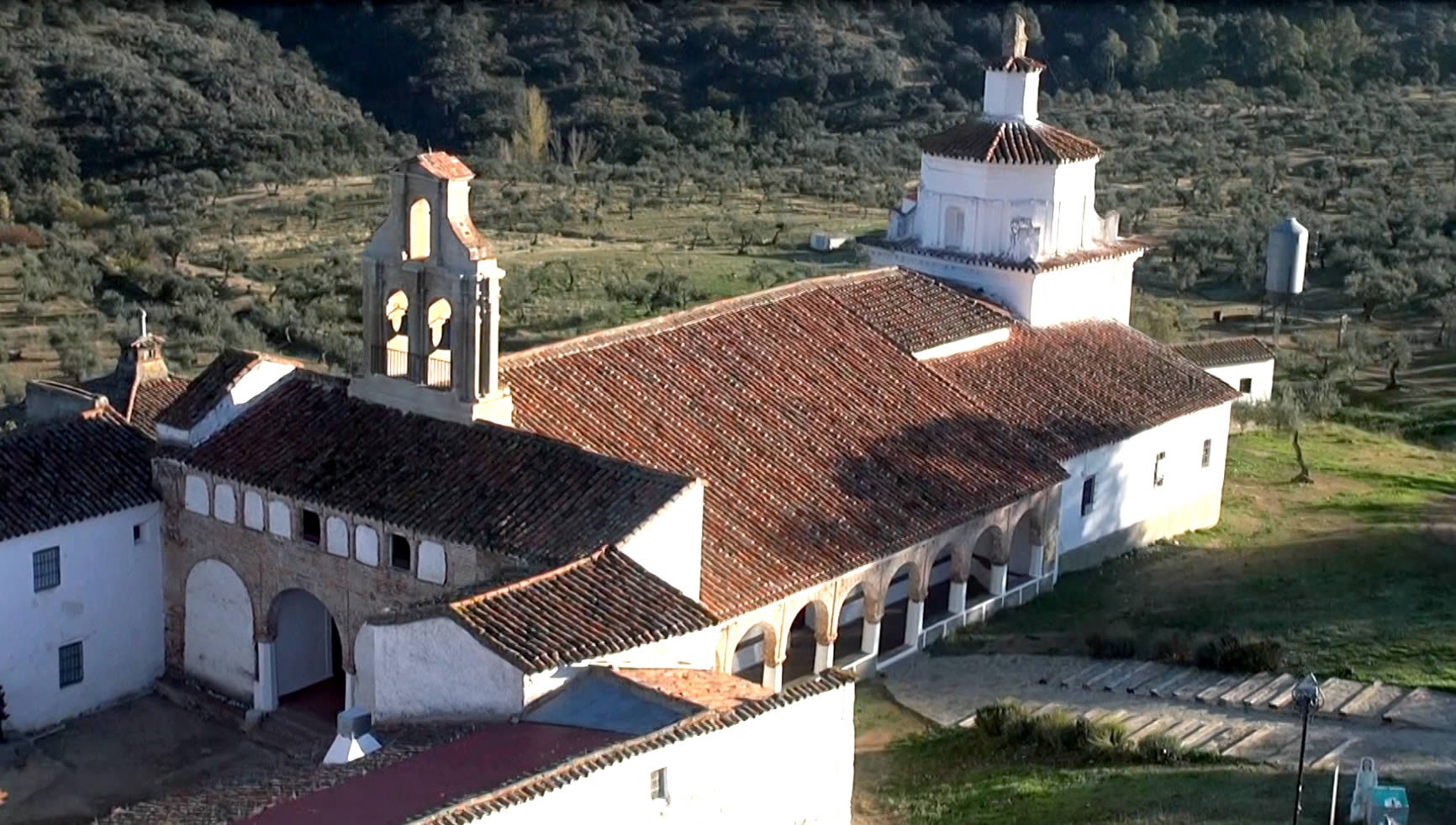
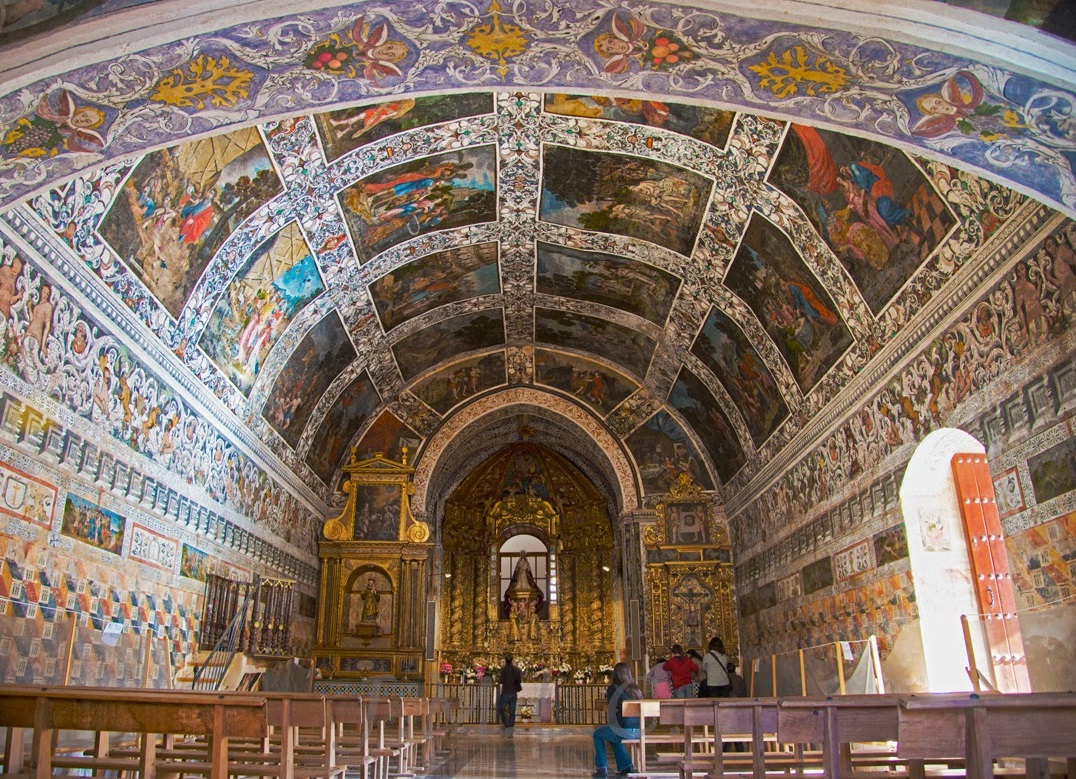

From Fuente del Arco there are several possible itineraries for getting to know the rest of the towns in the region of Campiña Sur. For example, the remains of the Roman Regina theatre are in Casas de Reina. The town of Reina is notable for the Arab fort that towers over it. You can also take advantage of your stay in the area to follow the routes of the different royal droving rights of way used by shepherds to take their flocks of sheep from Extremadura to Andalusia. The border character of this land is reflected in its gastronomy, which is a mixture of hearty mountain fare and dishes of Arab origin.
So if you happen to be in the area stop by and take a look.
 1
Like
Published at 8:48 PM Comments (0)
1
Like
Published at 8:48 PM Comments (0)
Spam post or Abuse? Please let us know
|
|